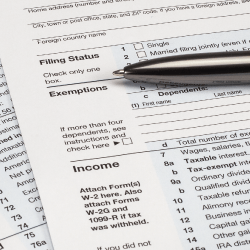The Research and Development (R&D) Tax Credit remains one of the best opportunities for businesses to substantially reduce their tax liability. For what amounts to their daily activities, companies from a wide-range of industries can qualify for federal and state tax savings high to enough to allow companies to hire new employees, invest in new products and service lines, and grow their operations.
Now, due to numerous modifications and expansions over the years, more companies than ever before can benefit from this valuable incentive.
What is the R&D Tax Credit?
The Research and Development Tax Credit is a government-sponsored tax incentive that rewards companies for conducting R&D in the United States. The credit was implemented to incentivize innovation throughout the economy and to keep technical jobs here in the U.S.
However, what constitutes R&D with regard to the credit is much more expansive than business owners realize, with activities related to applied sciences and other technical projects qualifying companies from numerous industries.
The R&D Tax Credit is for businesses of all sizes, not just major corporations with research labs – and many companies are eligible, with an expansive list of activities qualifying for the credit.
What Qualifies for the R&D Tax Credit?
If your company does any of the following, your business likely qualifies for the R&D Tax Credit:
- Develops or designs new products or processes
- Enhances existing products or processes
- Develops or improves upon existing prototypes and software
How do I claim the R&D Tax Credit?
A number of factors go into claiming the credit, but the potential savings on the table make exploring the credit a worthy investment. Since the credit may be claimed for both current and prior tax years, companies can benefit from documenting their R&D activities to ensure they are positioned to claim the credit in both situations.
To claim the credit, the taxpayer must contemporaneously evaluate and document their research activities to establish the amount of qualified research expenses paid for each qualified research activity. While taxpayers may estimate some research expenses, they must have a factual basis for the assumptions used to create the estimates.
Examples of such documentation includes:
- Payroll records
- General ledger expense detail
- Project lists
- Project notes
- Other documents a company produces throughout the regular course of business
These records combined with credible employee testimony can form the basis of a R&D Tax Credit claim – and alliant group’s comprehensive services can quickly identify and gather this information to substantiate your claim, ensuring you are receiving the full value you are entitled under relevant IRS guidelines and Treasury regulations.
How is the R&D Tax Credit Calculated?
Contact us for more information on how the R&D Tax Credit is calculated contact.
How has the R&D Tax Credit expanded over the years?
Since it was first put in place in 1981, the R&D Tax Credit has gone through a gradual evolution over time, with new legislation, regulations and judicial precedent expanding the number of businesses that can benefit from the credit and the savings that can be accrued through this incentive.
The most impactful changes have actually occurred within the last two decades. In 2003, the Discovery Rule was removed, meaning that research activities no longer had to be “new to the world”, but instead “new to the taxpayer” – a standard that is much more favorable to taxpayers.
In 2015, the Protecting Americans from Tax Hikes (PATH) Act not only made the R&D Tax Credit permanent, it modified the credit for the benefit of small and mid-size businesses and opened up its availability to startups.
Can the R&D Tax Credit be used to offset the Alternative Minimum Tax?
As a result of the PATH Act, “eligible small businesses” (defined as businesses with an average of $50 million or less in gross receipts over the past three years) may claim the federal R&D Tax Credit against their Alternative Minimum Tax (AMT) liability beginning in 2016.
Additionally, as a result of the Tax Cuts and Jobs Act (TCJA) of 2017 removing corporate AMT and loosening individual AMT restrictions, the credit has become further accessible to U.S. businesses.
How does the R&D Tax Credit’s “Startup Provision” Work?
Startups and small businesses may qualify for up to $1.25 million (or $250,000 each year for up to five years) of the federal R&D Tax Credit to offset the Federal Insurance Contributions Act (FICA) portion of their annual payroll taxes.
To be eligible, a company must:
- Have less than $5 million in gross receipts for the credit year
- Have no more than five years of gross receipts
How did tax reform affect the R&D Tax Credit?
While the TCJA implemented a number of sweeping reforms to the tax code in 2017, the R&D Tax Credit remains in place as one of the most valuable incentives available for the benefit of U.S. businesses.



